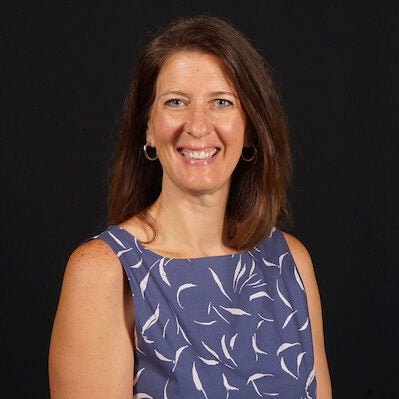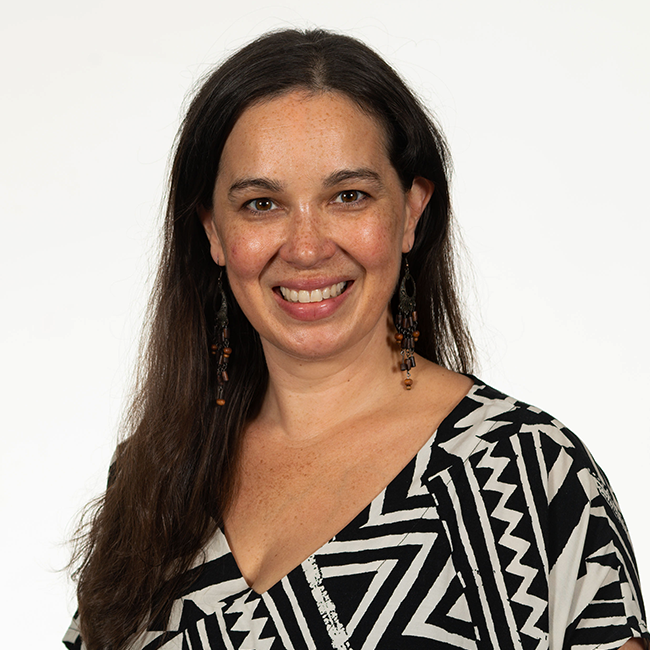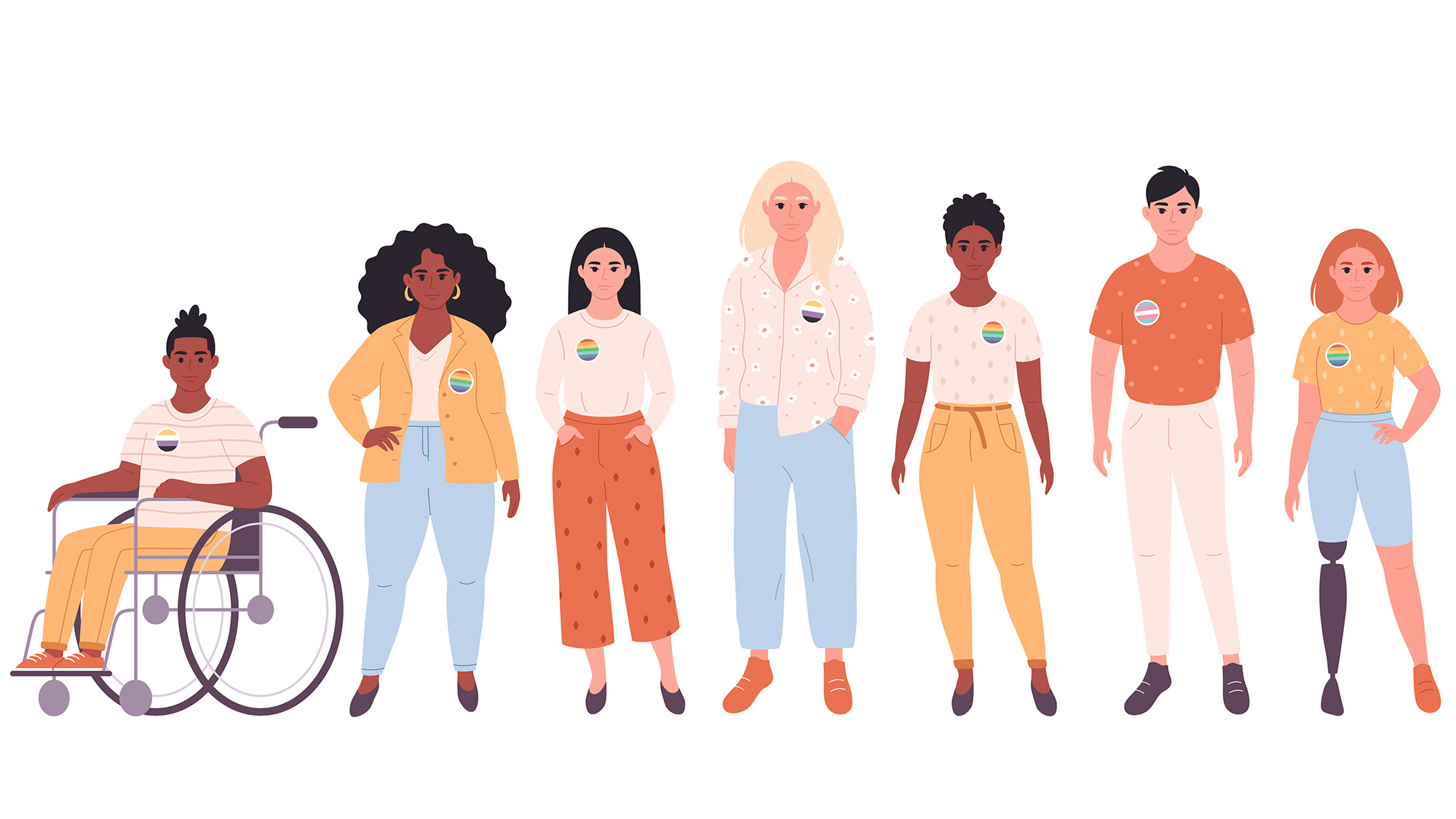Nursing Programs Implement Innovative Curriculum to Emphasize Health Equity
(July 28, 2023) — Recognizing a need to strategically weave health equity content throughout their courses, educators in the School of Nursing’s Women’s Health Nurse Practitioner (WHNP) and Nurse-Midwifery (NM)/WHNP Programs designed and implemented an innovative health equity curriculum to give students the knowledge and skills they need to provide patient-centered care and promote social justice. Once considered a soft skill, the leaders shifted the curriculum so that intersectionality-informed patient-centered care became a fundamental skill.

Melicia Escobar, DNP, CNM, WHNP-BC, FACNM
“By scaffolding this content throughout the curriculum, our aim is to support students in developing critical knowledge, engaging in critical reflection, and developing accountable behaviors that then go on to inform their clinical practice,” said Melicia Escobar, DNP, CNM, WHNP-BC, FACNM, assistant professor and program director of the NM/WHNP and WHNP programs. She spoke at “Advancing Health Equity in Midwifery & Women’s Health Nurse Practitioner (WHNP) Education” on June 20 as part of the School of Nursing’s Diversity, Equity, Inclusion and Belonging seminar series.
The NM/WHNP and WHNP programs’ revision and realignment has been further supported by the RADIANCE (respect, advocacy, diversity, inclusion, anti-racism, collaboration and equity) grant program, developed by the Medical Center’s Office of Faculty and Academic Affairs to support activities that contribute to a culture of respect, inclusion and belonging at GUMC.
An Intersectional Approach to Health Equity
Since 2016, Escobar has been working with Christina X. Marea, PhD, MA, FACNM, assistant professor in the NM/WHNP and WHNP programs and their colleagues to identify opportunities to advance the school’s values of social justice and health equity within the curriculum.
“We found that while our students could really easily master most clinical hand skills, what they struggled with were the patient-centered skills in the face of difference, be it race, ethnicity, weight and/or any other personally held biases due to structural forces at play,” she said. “So my colleagues and I aimed to design a curriculum wherein structural competency and an understanding of intersectionality-informed patient-centered care is no longer considered a soft skill, but rather seen as an essential clinical skill or a core competency for all learners.”

Heather M. Bradford, PhD, CNM, FACNM
As part of the curriculum revision, a consultant with expertise in anti-racism and health equity curricula was hired to work with each course coordinator to identify strengths and gaps related to health equity, said Heather M. Bradford, PhD, CNM, FACNM, assistant program director of the NM/WHNP and WHNP programs. The consultant found an emphasis on health equity content related to anti-racism, but other facets of health equity weren’t extensively covered.
“The content has been revised in terms of addressing racism, but not necessarily across other forms of bias and discrimination,” Bradford said. “Students also have commented on this gap in our content, and so that was something that we needed to focus on.”
“We look at topics including racism and its impacts, gender-affirming care, sex-positive care, screening for gender-based violence, contraceptive counseling that’s patient-centered and non-directive and weight bias in clinical care,” Escobar said. “And we begin this series with a session wherein we explore Jesuit values, professional values, personal values and reproductive health care.”
Focus on Faculty Development
The consultant also found that the knowledge, awareness and readiness to deliver health equity content among faculty varied widely. “There are some faculty who are not aware of even where to begin in terms of revising the curriculum, like not sure how to jump in and address it,” Bradford said. “And we really saw this as our biggest priority.”

Christina X. Marea, PhD, MA, FACNM
When faculty members build expertise in health equity content, they can mentor other colleagues, making faculty development a critical part of the health equity curriculum. “One of our ongoing goals is to continue our faculty development to ensure that all of our faculty, full-time, adjunct, in different positions and across the two programs, have similar levels of competence and confidence to engage in conversations around all of these intersections,” Marea said.
At the same time, it’s important to ensure that the work of implementing the health equity curriculum does not fall disproportionately on the shoulders of faculty members from marginalized and underrepresented backgrounds.
“We wanted to consider how existing power structures affect underrepresented faculty who are creating and delivering this curriculum, that this burden is not even, that underrepresented, marginalized and structurally excluded faculty are doing essential labor by generating this content and curriculum,” Marea said. “But that labor is also more than just the curriculum development, because it’s also being a resource for students who resonate with them, who have a shared identity.”
Learning Through Lecture, Guided Discussions and Role-play
The health equity curriculum offers opportunities for students to explore their values while rotating through sessions on racism and its effect on health, contraceptive counseling using a reproductive justice lens, gender-based violence, gender-affirming health care, weight bias in health care and becoming a sex-positive clinician.
Introductory lecture content helps students build a shared vocabulary while guided group discussions give students an opportunity to learn each other’s perspectives and reflect on their beliefs.
“We talk about how, in these sessions, it’s OK to fumble,” Marea said. “And we, as faculty, are going to step in if you’re causing harm, if you need a redirect, if we’re going to think about it a different way. But this is an opportunity to learn and practice articulating.”
Just as students practice articulating their perspectives, they also practice having conversations with patients around topics like reproductive health and discuss how race, socioeconomic status, body size and family size influence the way people are counseled.
“Students are always incredibly moved by the way they default to some of this language that is normative, that assumes there’s a right way to engage in sexual behavior or grow a family, and our students are incredibly open to learning new ways,” Marea said.
“Asking our students to engage in this reflection in the context of conversation and engagement is building that skill for them to notice their responses in the clinical setting, because while these conversations and settings can be challenging for students, we know that across every axis we teach, our students are going to see this in the clinical environment,” Marea added.
Kat Zambon
GUMC Communications
Top Image: Alina Kotliar / iStock / Getty Images Plus

